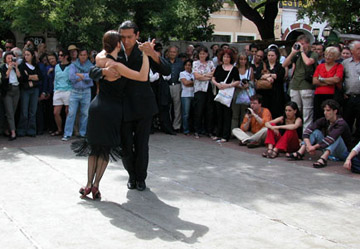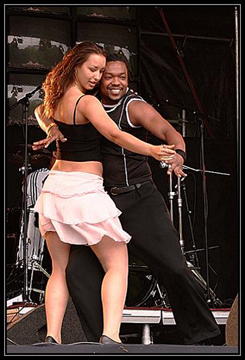Tango: Sultry And Elegant
It is 4am and the dimly lit dance floor is packed with couples in close embrace, chests and cheeks connected, legs moving in unison to a 50-year old tango by Pugliese.
They dance together as if they had known each other for decades, but no one in this crowd was even alive yet when this song came out and most of the couples are dancing together for the first time.

